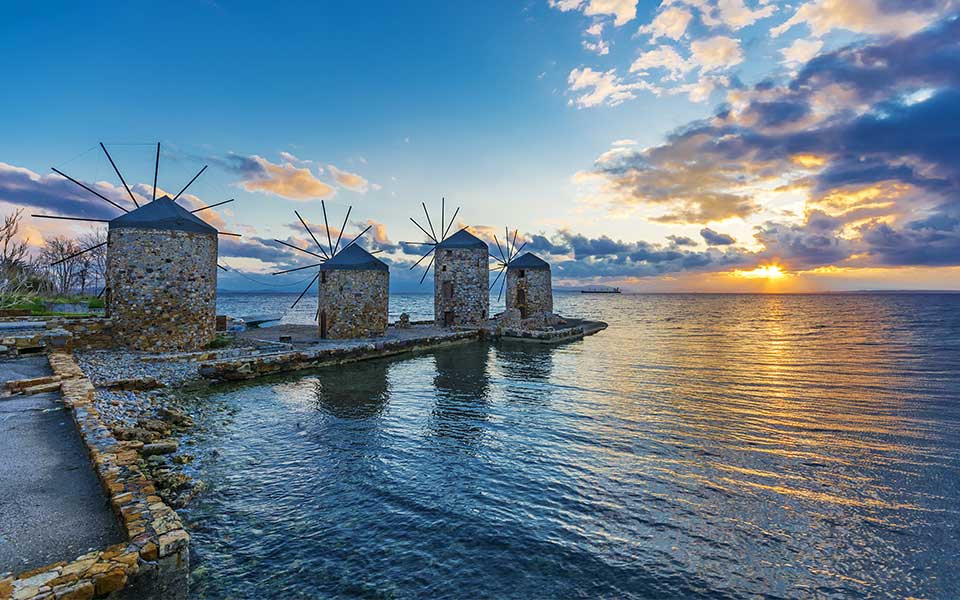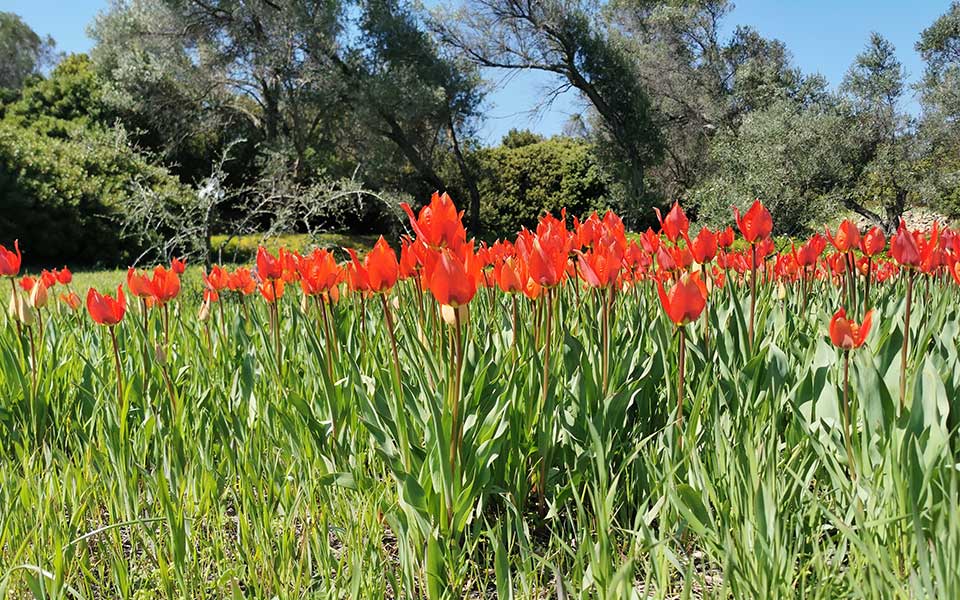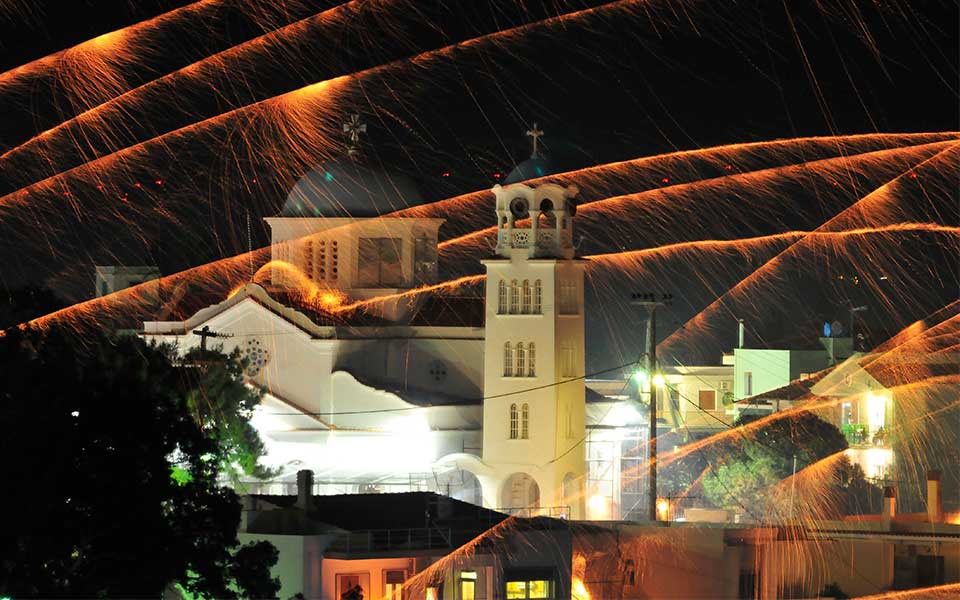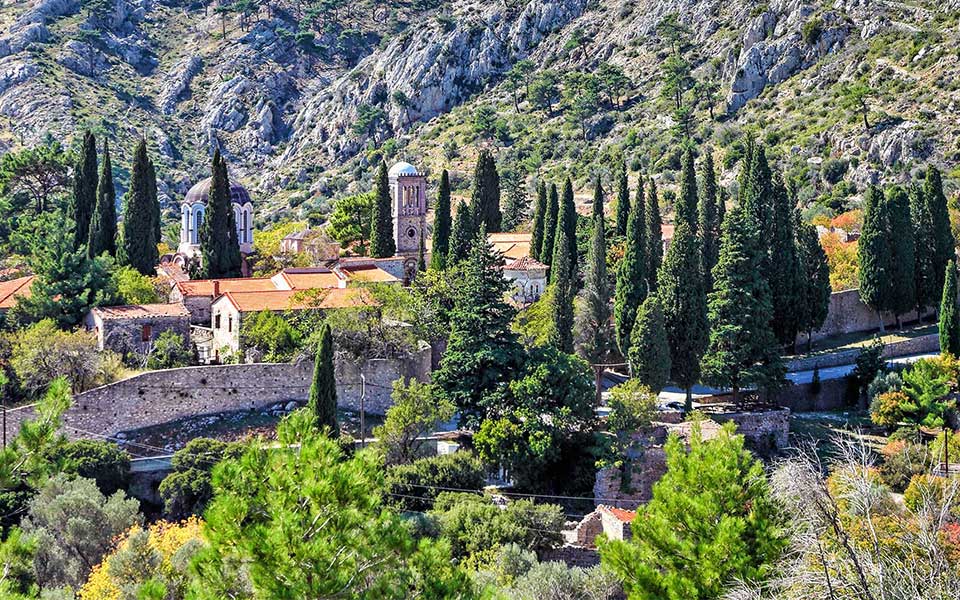Kimolos: A Summer Cinema Like No Other
A magical open-air cinema in Kimolos...

Chios is the ideal destination for those who value the North Aegean's authenticity.
© Shutterstock
Chios, one of three Greek islands recommended by Le Figaro for this year, is gradually making its way onto more top summer destination lists. Known as the island of mastic and still untouched by mass tourism, Chios entices travelers with its medieval villages, monuments, and flavors. This historic island, with its distinct architecture and rich biodiversity, is an ideal destination for all tastes and seasons.
Chios is the ideal destination for those who value the North Aegean’s authenticity, especially in the spring, when the scent of mandarin orchards fills the air, the fields turn red with blooming tulips, and the Chians are busy preparing rockets for the local Easter celebration.

Lalades, the wild tulips of Chios
© Shutterstock
Every spring, for a few days, the fields in the southeastern end of the island transform into seas of red, bursting with wild tulips. It is believed that lalades – as the locals call them from their Persian name “lale,” which was passed down from the Turks – arrived on the island from Persia millions of years ago. There are four types of lalades, three of which only grow on Chios. 76 different species of wild orchids grow throughout the island, from the mountains to the sea..
In spring, Kamposis filled with the scent of blossoming mandarin, orange, and bitter orange trees. The plain, only 5 km from the city of Chios, resembles an open-air museum, with over 200 traditional mansions scattered across the fields of citrus orchards, which are separated by stone walls and narrow, winding roads. The region, which was originally inhabited by Genovese traders, is ideal for cycling or walking to see the stone-built mansions’ ornate gates, pebbled courtyards, and old-style wells. Citrus (9-11 Argenti) offers local preserves in the orchard’s coffee shop, and you can also visit the small but fascinating Citrus Museum.

The rocket war of Vrontados
© Shutterstock
The famous “rocket war,” a historic exchange of rockets between the two largest parishes of the village of Vrontados, 5km north of the city of Chios, takes place every Easter. On Holy Saturday evening, homemade rockets light up the sky like fireworks as they are launched from the churches of Agios Markos and Panagia Ereithiani, culminating in a large celebration that dates back 150 years. Although the tradition originated during the Turkish occupation, it has since become associated with the Resurrection.

Nea Moni Monastery
© Shutterstock
A UNESCO World Heritage Site since 1990, Nea Moni of Chios is one of the most important examples of Middle Byzantine religious architecture in Greece. Known for its superb frescoes and mosaics, which are considered among the finest examples of Macedonian Renaissance art in Greece, this 11th-century Byzantine monastery is located in the center of the island in a valley of Mount Provatas. which has been designated a landscape of outstanding natural beauty. With its views of Asia Minor’s coast, the cobblestone path of Nea Moni is a great place to stroll and take in the scenery during the spring. If you visit Nea Moni during Lent, don’t miss the opportunity to experience the Akathist Hymn’s unique Byzantine atmosphere.
One of the highest mountains in the Aegean Sea can be found on the northwestern end of Chios. Mount Pelinaio, where according to Greek mythology the goddess Artemis fought Orion, is the island’s highest point at an elevation of 1,297 meters. A place of religious worship since antiquity, the mountain’s highest peak, where it is said the sanctuary of Zeus once stood, is now home to the small church of Aghia Triada, a popular destination for Pentecost celebrations. Mount Pelinaio is regarded as one of the best hiking destinations in the North Aegean Sea, and spring is the ideal time to climb to its summit and enjoy the island’s unique view from above.
A magical open-air cinema in Kimolos...
Patmos Aktis, Resort & Spa combines...
While some historic buildings teeter on...
Discover Greece’s islands in September with...